D-Sharp or E-Flat Minor on Guitar: Chord Shapes, Minor Scale, Popular Songs in the Key of E-Flat Minor
Author: Wanda Waterman
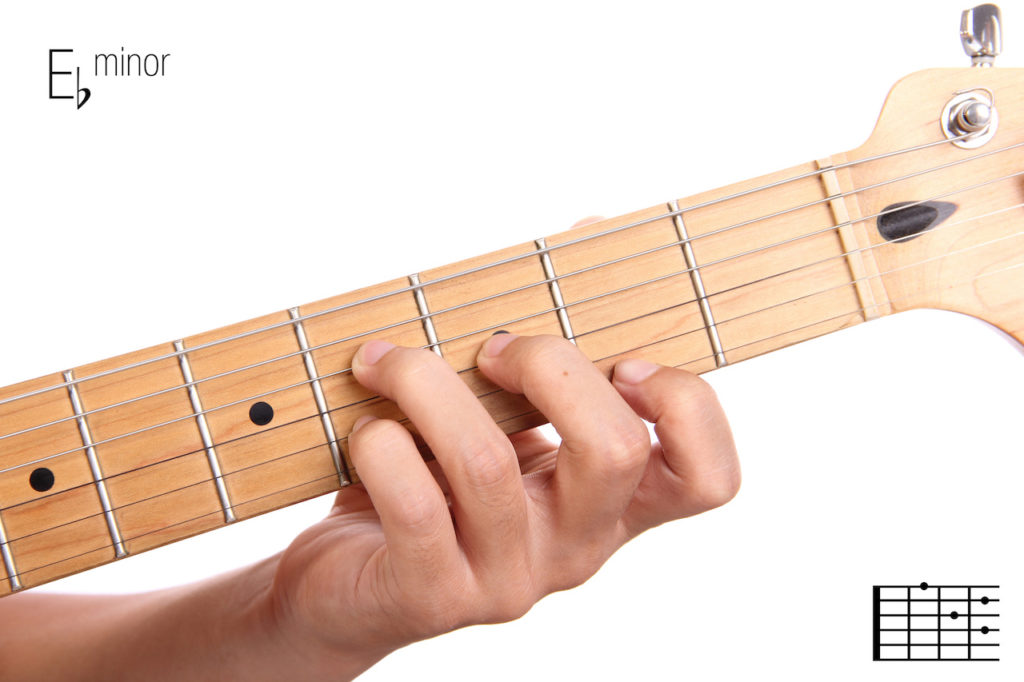
Table of Contents
D-Sharp or E-Flat Minor: The Eeyore of the Minor Keys
Our key for today is D-sharp or E-flat minor, a key of deep, dark blues, night terrors, hopelessness, and a nameless dread. Even worse, it has six sharps.
We’ll be looking at D-sharp or E-flat minor ‘s history, its use in popular music, and whether or not it’s hard to play it on the guitar. We’ll also jam through a few of the key’s songs and chord progressions.
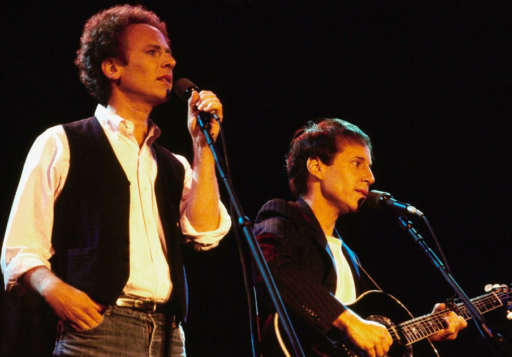
Both D-sharp minor and E-flat minor are names for the same series of tones, but if these tones are notated as being in the key of D-sharp minor, there are six sharps. E-flat minor is no easier or harder; with six flats it has the same number of accidentals as D-sharp minor.
So which key signature do we run with? In keeping with the KISS rule (Keep It Simple, Stupid) we usuallly pick the key signature that’s most often used, but in the case of D-sharp minor / E-flat minor we’re stuck: D-sharp minor tends to be notated more often for piano and E-flat minor more often for guitar. So for this article you’ll find us referring to both notations. But don’t worry— we’ll always be talking about the same chord and the same set of tones.
Just to prove this, go to the Uberchord chord finder and type in “D# minor” and then “Eb minor.” What you’ll see is the same chord shape, with the same notes— Eb, Gb, and Bb. In guitar music you may see the Eb minor chord more often than its enharmonic equivalent, D# minor (you’ll also see that the D# minor chord is named as Eb minor here.)
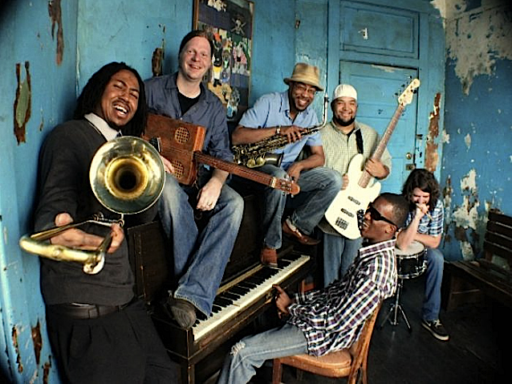
The key of D-sharp minor / E-flat minor is not too common among orchestral or guitar compositions, and is only slightly more common for classical piano pieces. Like its relative major, G-flat/F-sharp, D-sharp minor / E-flat minor uses all the black keys on the piano and so is loved by blues and jazz pianists because of how much easier this makes it to play a blues scale. You may find yourself needing to accompany a jazz or blues pianist one day, and they may just want you to play in D-sharp / E-flat minor. Best be ready, folks.
As for the emotional side of this key, think of the key of D-sharp / E-flat minor as Eeyore from Winnie-the-Pooh, always looking on the dark side, feeling sorry for himself, and wallowing in
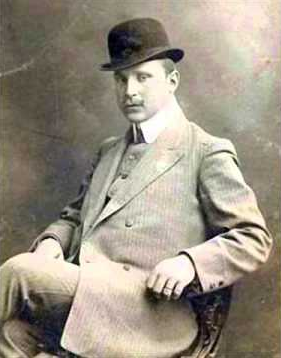
hopelessness.
As we said, this key is rarely found in orchestral pieces, but it tends to be more common in Russian classical music than anywhere else. Alexseevich Shatrov wrote a waltz called “On the Hills of Manchuria,” describing a loss to Japan during the Russo-Japanese war. Gustav Mahler also wrote the introduction to his Eighth Symphony in this key. Beethoven used the key for the introduction to the only oratoria he ever wrote: Christ on the Mount of Olives.
The D#/Eb Minor Chord Position on the Guitar: A Little Awkward, But a Nice Sound
This basic chord shape, like the F bar chord position, can be played all the way up the neck to make a host of other minor chords, but you must make sure the two bass strings are mute. It’s a little awkward but not hard to get a good sound out of this one as the fingers are relatively far apart. If you have trouble, don’t hesitate to use your Uberchord app to help you improve your tone and timing and to try out new rhythms and strumming techniques.
If this chord is new to you and you need help getting it down, this article gives you five great tips on how to learn new chords.
Theory and Practice: The Pattern of the D-sharp / E-Flat Minor Scale Explained
The pitches in the key of D-sharp minor are D#, E#, F#, G#, A#, B, and C#.

The simple D# minor chord, which forms the root of the D-sharp minor scale, contains the notes D#, F#, and A#— the first, third, and fifth notes of the key of D-sharp minor. On the guitar, using the basic D# chord position shown in the diagram above, these notes arrive in this order: Mute, Mute, D#, A#, D#, F#.
In the key of E-flat minor the same series of pitches is named Eb, F, Gb, Ab, Bb, Cb, and Db.

The simple Eb minor chord, which forms the root of the E-flat minor scale, contains the notes Eb, Gb, and BB— the first, third, and fifth notes of the key of E-flat minor. On the guitar, using the basic Eb minor chord position shown in the diagram above, these notes arrive in this order: Mute, Mute, Eb, Bb, Eb, Gb.
If you find it hard to stretch your forefinger across the four strings, you can play just the top three strings of this chord, but that’s kind of limiting. If you need more versatility, try the other chord shapes in the diagram above to play D#/Eb higher on the neck.
Chords and Common Chord Progressions in the Key of D-Sharp or E-Flat Minor
If you want to use every chord in the key of D-sharp minor, here they are (all chords major unless stated otherwise):
D#minor, E#diminished, F#, G# minor, A# minor, B, and C#
The following are a few chord progressions in the key of D-sharp minor.
- (Most common) I — IV—V—I: D#minor — G#minor — A#minor — D#minor
- I — V — VI — IV: D#minor — A#minor — B — G#minor
- I — VI — IV — V: D#minor — B — G#minor — A#minor
- I – V – VI – III – IV – I – IV – V: D#minor – A#minor – B – F# – G#minor – D#minor – G#minor – A#minor
- (Blues) I – I – I – I – IV – IV – I – I – V – V – I – I: D#minor – D#minor – D#minor – D#minor – G#minor – G#minor – D#minor – D#minor – A#minor – A#minor – D#minor – D#minor
- II – IV – V: E#diminished – G#minor – A#minor
- I – IV – V – IV: D#minor – G#minor – A#minor – G#minor
- V – IV – I: A#minor – G#minor – D#minor
- VI – IV – I – V: B – G#minor – D#minor – A#minor
And the following are the very same chords but named and notated as in the key of Eb minor: Eb minor, F diminished, Gb, Ab minor, Bb minor, Cb, and Db
- (Most common) I — IV—V—I: Eb minor — Ab minor — Bb minor — Eb minor
- I — V — VI — IV: Eb minor — Bb minor — Cb — Ab minor
- I — VI — IV — V: Eb minor — Cb — Ab minor — Bb minor
- I – V – VI – III – IV – I – IV – V: Eb minor – Bb minor – B – Gb – Ab minor – Eb minor – Ab minor – Bb minor
- (Blues) I – I – I – I – IV – IV – I – I – V – V – I – I: Eb minor – Eb minor – Eb minor – Eb minor – Ab minor – Ab minor – Eb minor – Eb minor – Bb minor – Bb minor – Eb minor – Eb minor
- II – IV – V: F diminished – Ab minor – Bb minor
- I – IV – V – IV: Eb minor – Ab minor – Bb minor – Ab minor
- V – IV – I: Bb minor – Ab minor – Eb minor
- VI – IV – I – V: Cb – Ab minor – Eb minor – Bb minor
Songs in the Key of D-Sharp / E-flat Minor: Dismal Dungeons of Despair
As we said at the beginning, the key of D-sharp / E-flat minor often shows a character that’s not much fun to be around— an emotional vampire on the best of days and a total downer on the rest.
D-sharp / E-flat minor can carry a song about the worst love karma imaginable, like Adele’s “River Lea.”
It can carry the seductive come-on of a Satanic lecher, like Metallica’s “Devil’s Dance.”
It can be a scary warning against the suffering caused by excessive magical thinking, like Stevie Wonder’s “Superstition.”
Even worse, it can be a song about a dysfunctional sado-masochistic relationship, like Linkin Park’s “Points of Authority.”
If that’s not enough to make you want to end it all, get a load of the dark, brooding, self-hating view of the world found in Limp Bizkit’s “Take a Look Around.”
https://www.youtube.com/watch?v=cSiUcpXibaI
But think about it: Where would we be without great songs like these? And isn’t misery a part (hopefully just a small part) of the natural scheme of things? And doesn’t learning how to play these songs make you feel special? Like it or not, the canon of popular song does at times need a gloomy glumster like D-sharp / E-flat minor.
Have you downloaded the Uberchord app yet? If not, here are five great reasons why you should!



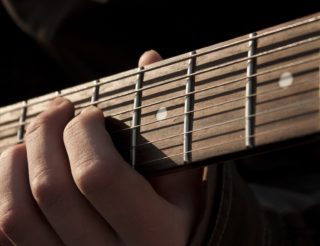

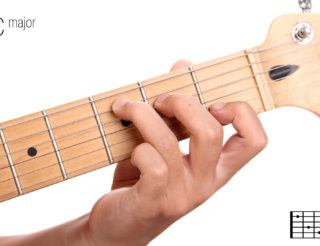


No comments yet - be the first.